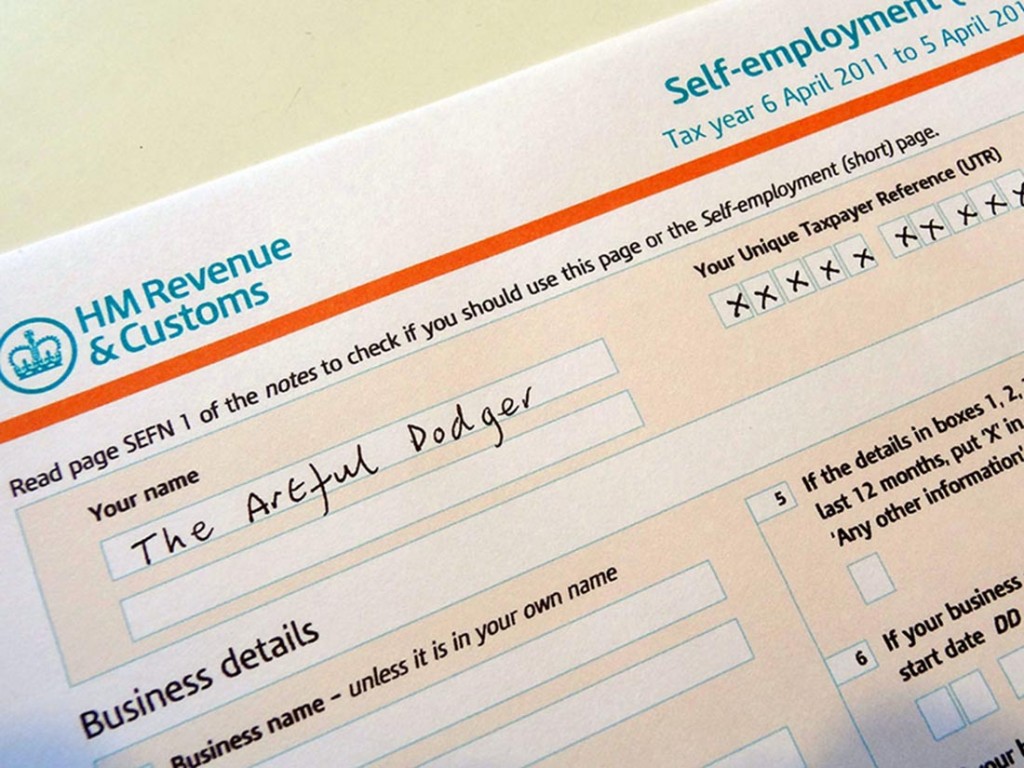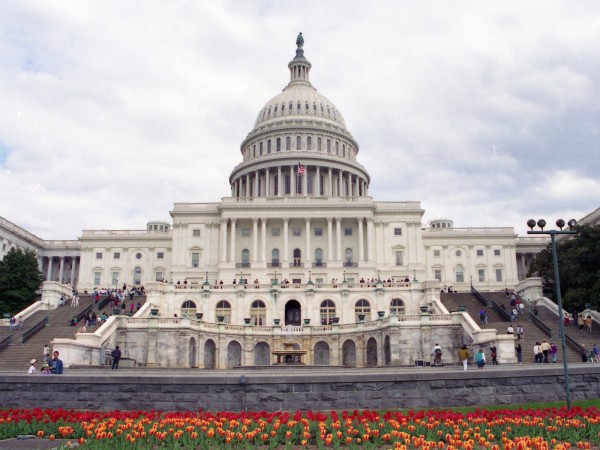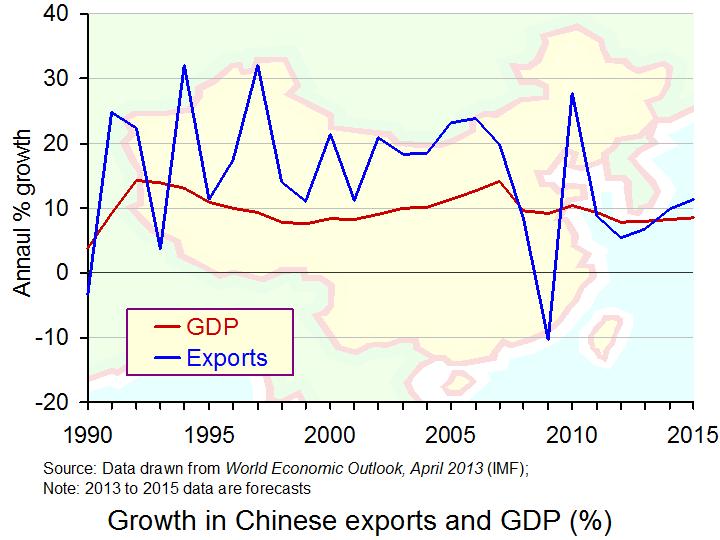 If you ask most people whether they like paying tax, the answer would surely be a resounding ‘no’. If asked would you like to pay less tax, most would probably say ‘yes’. Evidence of this can be seen in the behaviour of individuals and of companies, as they aim to reduce their tax bill, through both legal and illegal methods.
If you ask most people whether they like paying tax, the answer would surely be a resounding ‘no’. If asked would you like to pay less tax, most would probably say ‘yes’. Evidence of this can be seen in the behaviour of individuals and of companies, as they aim to reduce their tax bill, through both legal and illegal methods.
Our tax revenues are used for many different things, ranging from the provision of merit goods to the redistribution of income, so for most people they don’t object to paying their way. However, maintaining profitability and increasing disposable income is a key objective for companies and individuals, especially in weak economic times. Some high profile names have received media coverage due to accusations of both tax avoidance and tax evasion. Starbucks, Amazon, Googe and Apple are just some of the big names that have been accused of paying millions of pounds/dollars less in taxation than they should, due to clever (and often legal) methods of avoiding tax.
 The problem of tax avoidance has become a bigger issue in recent years with the growth of globalisation. Multinationals have developed to dominate the business world and business/corporation tax rates across the global remain very different. Thus, it is actually relatively easy for companies to reduce their tax burden by locating their headquarters in low tax countries or ensuring that business contracts etc. are signed in these countries. By doing this, any profits are subject to the lower tax rate and are thus such companies are accused of depriving the government of tax revenue. Apple is currently answering questions posed by a US Senate Committee, having been accused of structuring its business to create ‘the holy grail of tax avoidance’.
The problem of tax avoidance has become a bigger issue in recent years with the growth of globalisation. Multinationals have developed to dominate the business world and business/corporation tax rates across the global remain very different. Thus, it is actually relatively easy for companies to reduce their tax burden by locating their headquarters in low tax countries or ensuring that business contracts etc. are signed in these countries. By doing this, any profits are subject to the lower tax rate and are thus such companies are accused of depriving the government of tax revenue. Apple is currently answering questions posed by a US Senate Committee, having been accused of structuring its business to create ‘the holy grail of tax avoidance’.
Many may consider the above and decide that these companies have done little wrong. After all, many schemes aimed at tax avoidance are legal and are often just a clever way of using the system. However, in a business environment dominated by the likes of Google, Apple and Amazon, the impact of tax avoidance may not just be on the government’s coffers. Indeed John McCain, one of the Committee members asked:
…Couldn’t one draw the conclusion that you and Apple have an unfair advantage over domestic based corporations and companies, in other words, smaller companies in this country that don’t have the same ability that you do to locate in Ireland or other countries overseas?
The concern is that with such ability to avoid huge amounts of taxation, large companies will inevitably compete smaller ones out of the market. Local businesses, without the ability to re-locate to other parts of the world, pay their full tax bills, but multinationals legally (in most cases) manage to avoid paying their own share. With a harsh economic climate continuing globally, these large companies that aim to further increase their profitability through such means as tax avoidance will naturally bear the wrath of smaller businesses and individuals that are struggling to get by. It’s likely that this topic will remain in the media for some time. The following articles consider some of the companies accused of participating in tax avoidance schemes and the consequences of doing so.
Is Apple’s tax avoidance rational? BBC News, Robert Peston (21/5/13)
 Apple’s Tim Cook defends tax strategy in Senate BBC News (21/5/13)
Apple’s Tim Cook defends tax strategy in Senate BBC News (21/5/13)
Senator accuses Apple of ‘highly questionable’ billion-dollar tax avoidance scheme The Guardian, Dominic Rushe (21/5/13)
Apple’s Tim Cook faces tax avoidance questions Sky News (21/5/13)
EU leaders look to end Apple-style tax avoidance schemes Reuters, Luke Baker and Mark John (21/5/13)
Apple Chief Tim Cook defends tax practices and denies avoidance Financial Times, James Politi (21/5/13)
Apple CEO Tim Cook tells Senate: tiny tax bill isn’t our fault, it’s yours Independent, Nikhil Kumar (21/5/13)
Miliband promises action on Google tax avoidance The Telegraph (19/5/13)
Google is cheating British tax payers out of millions…what they are doing is just immoral’: Web giant accused of running ‘scandalous’ tax avoidance scheme by whistleblower Mail Online, Becky Evans (19/5/13)
Multinational CEOs tell David Cameron to rein in tax avoidance rhetoric The Guardian, Simon Bowers, Lawrie Holmes and Rajeev Syal (20/5/13)
Fury at corporate tax avoidance leads to call for a global response The Guardian, Tracy McVeigh (18/5/13)
Questions
- What is the difference between tax evasion and tax avoidance? Is it rational to engage in such schemes?
- What are tax revenues used for?
- Why are multinationals more able to engage in tax avoidance schemes?
- Is the problem of tax avoidance a negative consequence of globalisation?
- How might the actions of large multinationals who are avoiding paying large amounts of tax affect the competitiveness of the global market place?
- Is there justification for a global policy response to combat the issue of tax avoidance?
- What are the costs and benefits to a country of having a low rate of corporation tax?
- How would a more ‘reasonable’ tax on foreign earnings allow the ‘free movement of capital back to the US’?
 The US dollar has been used as the international currency for the majority of international trade. Around 85% of foreign-exchange transactions are trades between US dollars and other currencies. As the first article below, from the Wall St Journal, states:
The US dollar has been used as the international currency for the majority of international trade. Around 85% of foreign-exchange transactions are trades between US dollars and other currencies. As the first article below, from the Wall St Journal, states:
When a South Korean wine wholesaler wants to import Chilean cabernet, the Korean importer buys US dollars, not pesos, with which to pay the Chilean exporter. Indeed, the dollar is virtually the exclusive vehicle for foreign-exchange transactions between Chile and Korea, despite the fact that less than 20% of the merchandise trade of both countries is with the US.
… The dollar is the currency of denomination of half of all international debt securities. More than 60% of the foreign reserves of central banks and governments are in dollars.
But things are gradually changing as countries increasingly by-pass the dollar. Several countries have reached agreements with China to allow companies to exchange their currencies directly in so-called ‘currency swap‘ arrangements (see also). These include Japan, Australia, the UK, France/the eurozone, Argentina, Brazil, South Korea, Chile and Russia. But while these currency swap arrangements apply to current account transactions, there are still considerable controls of currency movements on China’s capital and financial accounts.
So what will be the implications for the USA and for China? What will be the impact on currency and bonds markets? The following articles explore the issues.
Why the Dollar’s Reign Is Near an End Wall Street Journal, Barry Eichengreen (1/3/11)
Beijing Continues Inexorable Push for Internationalisation of the Renminbi iNVEZZ, Alice Young (22/4/13)
RMB: Advance of the renminbi Emerging Markets, Elliot Wilson (4/5/13)
China’s new leaders to quicken yuan reform, but caution remains Reuters, Kevin Yao and Heng Xie (7/5/13)
Japan, China to launch direct yen-yuan trade on June 1 Reuters, Tetsushi Kajimoto (29/5/12)
China and Japan to start direct yen-yuan trade in June BBC News (29/5/12)
BOE Plans to Sign Yuan Currency Swap Deal With China Bloomberg, Fergal O’Brien & Svenja O’Donnell (22/2/13)
Bank of England, PBOC close to RMB/GBP swap agreement Emerging Markets (22/2/13)
China and Brazil sign $30bn currency swap agreement BBC News (27/3/13)
China, Brazil sign trade, currency deal before BRICS summit Reuters, Agnieszka Flak and Marina Lopes (26/3/13)
Direct trading to boost global use of yuan China Daily, Wei Tian (10/4/13)
Paris vies to be yuan hub China Daily, Li Xiang (19/4/13)
France plans currency swap line with China: paper Reuters (12/4/13)
Yuan Replaces the Dollar in China’s Dealings With France, Britain, Australia, as the War-Debt Continues to Destroy US Currency Al-Jazeerah (6/5/13)
China Takes Another Stab At The Dollar, Launches Currency Swap Line With France ZeroHedge, Tyler Durden (13/4/13)
Questions
- What are the ‘three pillars’ that have supported the dollar’s dominance?
- What is changing in the global economy to undermine this dominance?
- What will be the impact on the US government and US companies?
- What steps has China taken to ‘internationalise’ the renminbi (denominated in yuan)?
- Is the role of the euro likely to increase or decrease as an internationally held and used currency?
- What dangers are there for investors in holding all their wealth in dollar-denominated assets?
- Why may the increasing internationalisation of the euro and renminbi lead to less volatility between them and the dollar?
- How will the growing internationalisation of the euro and renminbi benefit eurozone and Chinese banks and internationally trading companies?
- What more does China need to do before the renminbi can be regarded as a truly global currency?
 The latest growth data for the UK is somewhat difficult to interpret. It’s positive, but not that positive. The Conservatives say it shows that the economy is moving in the right direction. Labour suggests it is evidence that the Coalition’s policies are not working. With a return to positive growth, the UK has avoided the triple dip recession and here we take a closer look at the economic performance of other key nations.
The latest growth data for the UK is somewhat difficult to interpret. It’s positive, but not that positive. The Conservatives say it shows that the economy is moving in the right direction. Labour suggests it is evidence that the Coalition’s policies are not working. With a return to positive growth, the UK has avoided the triple dip recession and here we take a closer look at the economic performance of other key nations.
In the final quarter of 2012, the US economy grew at 0.4%, but in the 3 months to March 2013, economic growth in America picked up to 2.5%. Consumer spending significantly increased, growing at an annualized rate of 3.2%, according to the Commerce Department. This figure helped boost the growth rate of the US economy, as consumer spending accounts for around two thirds of economic activity.
 However, the growth figure was lower than expected, in part due to lower government spending. Furthermore, there are suggestions that the positive consumer spending figures are merely a positive blip and spending will fall as the US economy moves through 2013.
However, the growth figure was lower than expected, in part due to lower government spending. Furthermore, there are suggestions that the positive consumer spending figures are merely a positive blip and spending will fall as the US economy moves through 2013.
If this does prove to be the case in the USA, it will do little to further boost UK economic growth, which was recorded at 0.3% for the first 3 months of 2013. The Chancellor has said that the growth figures are encouraging and are evidence that the government’s policies are working.
Today’s figures are an encouraging sign the economy is healing … Despite a tough economic backdrop, we are making progress. We all know there are no easy answers to problems built up over many years, and I can’t promise the road ahead will always be smooth, but by continuing to confront our problems head on, Britain is recovering and we are building an economy fit for the future.
While the USA and UK have recorded positive growth, expectations of growth throughout Europe remain uncertain. Spain has revised its forecasts downwards for 2013, expecting the economy to shrink by over 1%. Even after 2013, growth is expected to remain very weak, forecast to be 0.5% in 2014 and 0.9% in 2015. To make matters worse, Spain’s unemployment continues to move in the wrong direction, with data for the first 3 months of 2013, recording an unemployment rate of 27.2% – the highest on record.
However, it’s not just Spanish unemployment that is on the rise. Figures for March show that in France, 3.2 million people were out of work, a 1.2 % rise compared to February. In the UK, 2.56 million people were recorded as unemployed, representing just under 8% of the working population. The German economy continues to outperform its European partners, but eurozone growth continues to look weak for the rest of 2013.
Despite much bad news in Europe, growth in other parts of the world remains buoyant. South Korea has recorded economic growth that is at its highest level in 2 years. Economic growth was just under 1%, but construction and investment both increased, perhaps a sign of an economy starting its recovery.
 The Chinese economy has seemed relatively unaffected by the economic downturn, yet its economic growth has slowed. Averaging over 10% per annum for the last decade, the growth for January – March 2013 was only 7.7%. This is a decline on the previous 3 months and is lower than expected. If the Chinese economy does begin to slow (relatively speaking), this could present the global economic recovery with an unwelcome obstacle.
The Chinese economy has seemed relatively unaffected by the economic downturn, yet its economic growth has slowed. Averaging over 10% per annum for the last decade, the growth for January – March 2013 was only 7.7%. This is a decline on the previous 3 months and is lower than expected. If the Chinese economy does begin to slow (relatively speaking), this could present the global economic recovery with an unwelcome obstacle.
Many Western economies are reliant on exports to boost their growth figures and with such high demand in China, this is a key export market for many countries. If the Chinese economy continues to slow, consumer spending may even fall and this could mean a reduction in Chinese imports: that is, a reduction in other countries’ exports to China. However, for China’s competitors, the news is better, as with China’s move from a low to middle-income country, other countries will now see an opportunity to grasp a competitive advantage in the production of cheaper products. David Rees from Capital Economics said:
Trade data show that Chinese imports of commodities, and industrial metals in particular, have been falling in recent months … That is bad news for those emerging markets in Latin America, the Middle East, and Africa that predominately export commodities to China. It is not all bad news … To the extent that China’s structural slowdown reflects its transition from low to middle-income status, opportunities will present themselves for other EMs as China moves up the value chain. We are particularly upbeat on the manufacturing-based economies of South East Asia, along with Mexico, Poland, and Turkey.
News is better in Japan, where growth forecasts have been raised to 2.9% over the same period and the economy is expected to grow by 1.5% throughout both 2013 and 2014. Furthermore, suggestions that inflation may also reach 0.7% have boosted confidence. This might be the end of Japan’s troubles with deflation.
So, we have something of a mixed picture across the world, although the IMF predicts a global rate of growth of 3.5% for 2013, which would be an improvement on 2012 figures. The following articles consider the global situation.
Spain slashes economic growth forecast Sky News (26/4/13)
UK avoids triple-dip recession with better than expected 0.3% GDP growth The Guardian, Heather Stewart (26/4/13)
US economy grows 2.5% on buoyant consumer spending BBC News (26/4/13)
Poor French and Spanish jobs data but UK economy returns to growth – as it happened The Guardian, Graeme Wearden and Nick Fletcher (25/4/13)
UK economy avoids tiple-dip recession with 0.3pc GDP growth The Telegraph, Szu Ping Chan (25/4/13)
South Korea economic growth hits two year high BBC News (25/4/13)
S. Korea economy grows at the fastest pace in two years Bloomberg, Eunkyung Seo (25/4/13)
Spain revises down its economic forecast BBC News (26/4/13)
US economy sees broad growth Financial Times, Robin Harding (25/4/13)
Germany’s private sector shrinks as Eurozone decline continues – as it happened The Guardian, Graeme Wearden and Nick Fletcher (23/4/13)
China economic growth lower than forecast BBC News (15/4/13)
China’s slowing economy: what you need to know Bloomberg Business Week, Dexter Roberts (25/4/13)
Modest Growth Pickup in 2013, Projects IMF International Monetary Fund (23/1/13)
Questions
- How is economic growth measured?
- What is meant by a triple-dip recession?
- What has caused the small increase in growth in the UK? Do you think this signifies the start of the economic recovery?
- In the USA, what has caused the growth rate to reach 2.5% and why is it lower than expected?
- Why are growth rates in countries across the world relevant for UK forecasts of economic growth?
- Which factors have allowed the Chinese economy to achieve average growth rates above 10% for the past decade?
- Using an AD/AS diagram, illustrate the desired impact of the Coalition’s policies to boost economic growth.
- With unemployment rising in countries like Spain and France, how might Eurozone growth be affected in the coming months?
- Japanese growth is looking positive and inflation is expected to reach about 0.7%. Why is it that Japan has suffered from deflation for so many years and why is this a problem?
 In the blog No accounting for trade, the rise in the UK’s balance of trade deficit was discussed. Many factors have contributed to this weakening position and no one market is to blame. But, by analysing one product and thinking about the factors that have caused its export volumes to decline, we can begin to create a picture not just of the UK economy (or more particularly Scotland!), but of the wider global economy.
In the blog No accounting for trade, the rise in the UK’s balance of trade deficit was discussed. Many factors have contributed to this weakening position and no one market is to blame. But, by analysing one product and thinking about the factors that have caused its export volumes to decline, we can begin to create a picture not just of the UK economy (or more particularly Scotland!), but of the wider global economy.
Scotch whisky may not have been the drink of choice for many British adults, but look outside Great Britain and the volume consumed is quite staggering. For example, French consumers drink more Scotch whisky in one month than they drink cognac in one year. The volume of Scotch whisky exported from our shores was £4.23 billion for 2011, accounting for 90% of all sales and making its way into 200 markets. However, one problem with this product is that it is highly susceptible to the business cycle. Add to this the time required to produce the perfect Scotch (in particular the fact that it must be left to mature) and we have a market where forecasting is a nightmare.
Producers typically look to forecast demand some 10 years ahead and so getting it right is not always easy, especially when the global economy declines following a financial crisis! So what has been the impact on exports of this luxurious drink? In the past few years, it has been as key growth market for UK exports rising by 190% in value over the past decade. But in 2012 the volume of Scotch whisky exports fell by 5% to 1.19 billion bottles. What explains the decline in sales?
The biggest importer of Scotch whisky is France and its volumes were down by 25%. Part of this decline is undoubtedly the economic situation. When incomes decline, demand for normal goods also falls. Many would suggest Scotch whisky is a luxury and thus we would expect to see a relatively large decline following any given fall in income. However, another factor adding to this decline in 2012 is the increased whisky tax imposed by the French government. Rising by 15% in 2012, commentators suggest that this caused imports of Scotch whisky to rise in 2011 to avoid this tax, thus imports in 2012 took a dive. Spain is another key export market and its economic troubles are clearly a crucial factor in explaining their 20% drop in volume of Scotch whisky imported.
But, it’s not all bad news: sales to Western Europe may be down, but Eastern Europe and other growth countries/continents, such as the BRICs and Africa have developed a taste for this iconic product. Latvia and Estonia’s value of Scotch whisky imports were up by 48% and 28% respectively, as Russian demand rises and China, still growing, is another key market. Gavin Hewitt, chief executive of the Scotch Whisky Association said:
A combination of successful trade negotations, excellent marketing by producers, growing demand from mature markets, particularly the USA, and the growing middle class in emerging economies helped exports hit a record £4.3bn last year.
Furthermore, while the volume of exports worldwide did fall, the value of these exports rose to £4.27 billion, a growth of 1%. This suggests that although we are exporting fewer bottles, the bottles that we are exporting are more expensive ones. Clearly some people have not felt the impact of the recession. For Scotland and the wider UK, these declining figures are concerning, but given the cyclical nature of the demand, as the world economy slowly begins to recover, sales are likely to follow suit. Gavin Hewitt continued his comments above, saying:
We are contributing massively to the Government’s wish for an export-led recovery. There is confidence in the future of the industry, illustrated by the £2bn capital investment that Scotch whisky producers have committed over the next three to four years.
The following articles consider the rise and fall of this drink and its role as a key export market across the world.
 Scottish whisky industry puts export hope in new market BBC News (2/4/13)
Scottish whisky industry puts export hope in new market BBC News (2/4/13)
Scotch whisky sales on the slide The Guardian, Simon Neville (2/4/13)
Growth stalls for Scotch whisky exports BBC News (2/4/13)
Scotch whisky accounts for 25pc of UK’s food and drink exports The Telegraph, Auslan Cramb (2/4/13)
Whisky sales fall but value of exports hits new high Herald Scotland (3/4/13)
Scotch whisky exports rise to record value The Telegraph, Auslan Cramb (2/4/13)
Scotch whisky exports hit by falling demand in France The Grocer, Vince Bamford (2/4/13)
New markets save Scotch from impact of austerity Independent, Tom Bawden (2/4/13)
Scotch exports hit by falling demand Financial Times, Hannah Kichler (2/4/13)
Questions
- Which is the better measure of an industry’s performance: the value or the volume of goods sold?
- Why would you expect volumes of Scotch sold to decline during an economic downturn?
- When a higher tax was imposed on Scotch whisky in France, why did volumes fall? Use a demand and supply diagram to illustrate the impact of the tax.
- What type of figure would you expect Scotch whisky to have for income elasticity of demand? Does it vary for different people?
- Why is forecasting demand for Scotch so difficult? What techniques might be used?
- Why does demand for Scotch whisky remain high and even rising in many emerging markets?
- Is the market for Scotch whisky exports a good indication of the interdependence of countries across the world?
 After a week of turmoil in Cyprus (see the News item Ochi, ochi, ochi) a deal has been struck between Cyprus, the EU and the IMF over a €10bn bailout for the island’s banking system. But while the deal may bring the immediate crisis to an end, the Cypriot economy could face years of austerity and depression. And there remain questions over whether the deal sends the wrong message to depositors in banks in other eurozone countries whose banking systems are under pressure.
After a week of turmoil in Cyprus (see the News item Ochi, ochi, ochi) a deal has been struck between Cyprus, the EU and the IMF over a €10bn bailout for the island’s banking system. But while the deal may bring the immediate crisis to an end, the Cypriot economy could face years of austerity and depression. And there remain questions over whether the deal sends the wrong message to depositors in banks in other eurozone countries whose banking systems are under pressure.
Unlike the original EU proposal, the deal will not impose a levy on deposits under €100,000, much to the relief of small and medium depositors. But individuals and businesses with deposits over €100,000 in the two main troubled banks (Laiki and the Bank of Cyprus) will face losses that could be as high as 40%. The precise size will become clear in the coming days.
The troubled second largest bank, Laiki (Popular) Bank, will be split into a ‘good’ and a ‘bad’ bank. The assets and liabilities of the good part will be taken over by the largest bank, the Bank of Cyprus. Thus people’s accounts under €100,000 will be moved from one to the other. The ‘bad’ part will include deposits over €100,000 and bonds. Holders of these could lose a substantial proportion of their value.
 Many businesses will be hard hit and may be forced to close. This could have serious adverse multiplier effects on the economy. These effects will be aggravated by the fiscal austerity measures which are also part of the deal. The measures are also likely to discourage further inward investment, again pushing the economy further into recession.
Many businesses will be hard hit and may be forced to close. This could have serious adverse multiplier effects on the economy. These effects will be aggravated by the fiscal austerity measures which are also part of the deal. The measures are also likely to discourage further inward investment, again pushing the economy further into recession.
And then there are the broader effects on the eurozone. The direct effect of a decline in the Cypriot economy would be tiny; the Cypriot economy accounts for a mere 0.2% of eurozone GDP. Also the effect on small savers in other eurozone countries is also likely to be limited, as people will probably be reassured that savings under €100,000 have remained protected, even in an economy as troubled as Cyprus.
But some commentators argue that the effect on large depositors in other troubled eurozone countries, such as Portugal, Spain, Greece and Italy, could be much more serious. Would people with large balances in these countries prefer to move their money to, say, Germany, or even out of the eurozone altogether? There is clearly disagreement over this last point as you will see from the articles below.
Webcasts and Podcasts
 Cyprus agrees bailout with eurozone ministers The Guardian (25/3/13)
Cyprus agrees bailout with eurozone ministers The Guardian (25/3/13)
 Cyprus bailout: Deal reached in Eurogroup talks BBC News (25/3/13)
Cyprus bailout: Deal reached in Eurogroup talks BBC News (25/3/13)
 ‘Disaster avoided’ as Cyprus agrees EU bailout deal Euronews (25/3/13)
‘Disaster avoided’ as Cyprus agrees EU bailout deal Euronews (25/3/13)
 Cyprus saved from bankruptcy Channel 4 News on YouTube, Faisal Islam (25/3/13)
Cyprus saved from bankruptcy Channel 4 News on YouTube, Faisal Islam (25/3/13)
 What are the implications of the Cyprus deal? BBC Radio 4 Today Programme, Stephanie Flanders (25/3/13)
What are the implications of the Cyprus deal? BBC Radio 4 Today Programme, Stephanie Flanders (25/3/13)
 Cyprus bailout deal: Russia riled but Germany relieved BBC News, Steve Rosenberg in Moscow and Stephen Evans in Berlin (25/3/13)
Cyprus bailout deal: Russia riled but Germany relieved BBC News, Steve Rosenberg in Moscow and Stephen Evans in Berlin (25/3/13)
 Cyprus bailout deal ‘durable’ says IMF chief BBC News, Christine Lagarde (25/3/13)
Cyprus bailout deal ‘durable’ says IMF chief BBC News, Christine Lagarde (25/3/13)
 Cyprus Bailout Deal Raises Questions: Lombardi Bloomberg, Domenico Lombardi (25/3/13)
Cyprus Bailout Deal Raises Questions: Lombardi Bloomberg, Domenico Lombardi (25/3/13)
 Minister Michalis Sarris: Cyprus paying ‘tremendous cost’ BBC Radio 4 Today Programme, Michalis Sarris (26/3/13)
Minister Michalis Sarris: Cyprus paying ‘tremendous cost’ BBC Radio 4 Today Programme, Michalis Sarris (26/3/13)
Articles
Last-minute Cyprus deal to close bank, force losses Reuters, Jan Strupczewski and Annika Breidthardt (25/3/13)
Cyprus strikes last-minute EU bailout deal The Guardian, Ian Traynor (25/3/13)
‘There is no future here in Cyprus’ The Telegraph, Nick Squires (25/3/13)
Back from the brink: EU ministers approve €10bn bailout deal at 11th-hour to save Cyprus Independent, Charlotte McDonald-Gibson and Majid Mohamed (25/3/13)
Cyprus bailout: Deal reached in Eurogroup talks BBC News (25/3/13)
Q&A: Cyprus deal BBC News (25/3/13)
The rescue of Cyprus won’t feel like one to its people BBC News, Robert Peston (25/3/13)
Lessons of Cyprus BBC News, Stephanie Flanders (25/3/13)
Cyprus bailout: Dijsselbloem remarks alarm markets BBC News (25/3/13)
Cyprus saved – but at what cost? The Guardian, Helena Smith (25/3/13)
Cyprus bail-out: savers will be raided to save euro in future crisis, says eurozone chief The Telegraph, Bruno Waterfield (25/3/13)
Cyprus’s banks have been tamed – are Malta and Luxembourg next? The Guardian, Ian Traynor (25/3/13)
Lehman lessons weigh on Cyprus talks but 1920s slump must not be ignored The Guardian, Larry Elliott (24/3/13)
Questions
- Explain what is meant by ‘moral hazard’. What moral hazards are implicit in the deal that has been struck with Cyprus?
- How does the size of the banking system in Cyprus as a proportion of GDP differ from that in other troubled eurozone countries? How does this affect the ‘contagion’ argument?
- Does the experience of Iceland and its troubled banks suggest that the Cypriot problem has nothing to do with its being in the eurozone?
- What options are open to the Cypriot government to stimulate the economy and prevent a severe recession? How realistic are these options (if any)?
- What are the likely implications of the deal for the economic relationships (as opposed to the political ones) between Cyprus and Russia and between the eurozone and Russia?
- Are there any similarities in the relationships between the weak and strong eurozone countries today and those between Germany and other countries in the 1920s and 30s?
 If you ask most people whether they like paying tax, the answer would surely be a resounding ‘no’. If asked would you like to pay less tax, most would probably say ‘yes’. Evidence of this can be seen in the behaviour of individuals and of companies, as they aim to reduce their tax bill, through both legal and illegal methods.
If you ask most people whether they like paying tax, the answer would surely be a resounding ‘no’. If asked would you like to pay less tax, most would probably say ‘yes’. Evidence of this can be seen in the behaviour of individuals and of companies, as they aim to reduce their tax bill, through both legal and illegal methods. The problem of tax avoidance has become a bigger issue in recent years with the growth of globalisation. Multinationals have developed to dominate the business world and business/corporation tax rates across the global remain very different. Thus, it is actually relatively easy for companies to reduce their tax burden by locating their headquarters in low tax countries or ensuring that business contracts etc. are signed in these countries. By doing this, any profits are subject to the lower tax rate and are thus such companies are accused of depriving the government of tax revenue. Apple is currently answering questions posed by a US Senate Committee, having been accused of structuring its business to create ‘the holy grail of tax avoidance’.
The problem of tax avoidance has become a bigger issue in recent years with the growth of globalisation. Multinationals have developed to dominate the business world and business/corporation tax rates across the global remain very different. Thus, it is actually relatively easy for companies to reduce their tax burden by locating their headquarters in low tax countries or ensuring that business contracts etc. are signed in these countries. By doing this, any profits are subject to the lower tax rate and are thus such companies are accused of depriving the government of tax revenue. Apple is currently answering questions posed by a US Senate Committee, having been accused of structuring its business to create ‘the holy grail of tax avoidance’. Apple’s Tim Cook defends tax strategy in Senate BBC News (21/5/13)
Apple’s Tim Cook defends tax strategy in Senate BBC News (21/5/13)





